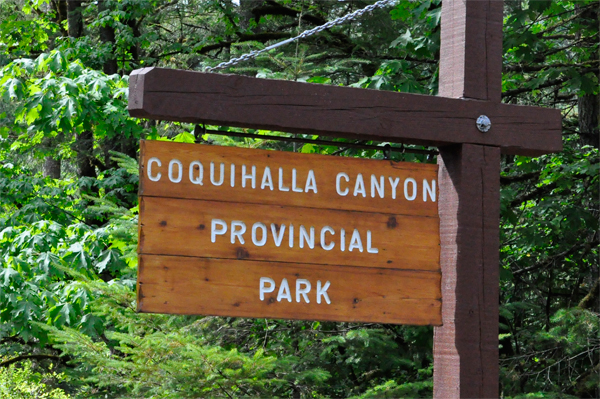 |
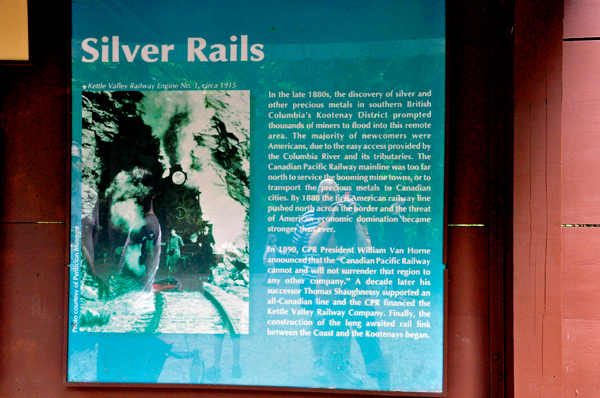 |
 Coquihalla Canyon Provincial Park, often called The Othello Tunnels, is a provincial park located near Hope, British Columbia. It is focused on the canyon of the Coquihalla River and a decommissioned railway grade that is now a walking trail leading to Coquihalla Pass. Originally part of the Kettle Valley Railway, five tunnels and a series of bridges follow a relatively straight line through the gorge, which is lined with sheer, flat rock cliffs. Coquihalla Canyon Provincial Park, often called The Othello Tunnels, is a provincial park located near Hope, British Columbia. It is focused on the canyon of the Coquihalla River and a decommissioned railway grade that is now a walking trail leading to Coquihalla Pass. Originally part of the Kettle Valley Railway, five tunnels and a series of bridges follow a relatively straight line through the gorge, which is lined with sheer, flat rock cliffs.
The park was established by Order-in-Council as the Coquihalla Canyon Recreation Area, then upgraded and renamed with full provincial park status in 1997, at 151.3 hectares in size. It was expanded to its current 159 hectares in 2004.
The park's rock cliffs and relative close distance to Vancouver has resulted in many popular movies being filmed there. Rambo: First Blood, Shoot to Kill, The Adventures of Yellow Dog and Cabin in the Woods were all filmed in Coquihalla Canyon.
The location is easily recognizable when watching the movie "Rambo: First Blood" where Sylvester Stallone hangs off the cliff while a helicopter tries to snipe him down.
In May 2015, the tunnels reopened after having been closed for over
a year due to rock fall concerns. |
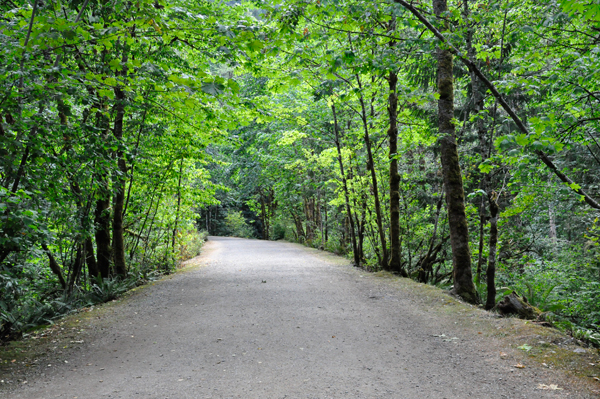 |
 The Kettle Valley Railroad was a subsidiary of the Canadian Pacific Railway that operated in the Thompson-Okanagan region of southern British Columbia. The Kettle Valley Railroad was a subsidiary of the Canadian Pacific Railway that operated in the Thompson-Okanagan region of southern British Columbia.
It opened in 1915 and was abandoned in portions beginning in 1961, with the final segment falling into disuse in 1989.
Much of the railroad's original route has been converted to a multi-use recreational trail, known as the Kettle Valley Rail Trail, which carries the Trans-Canada Trail through this part of British Columbia. |
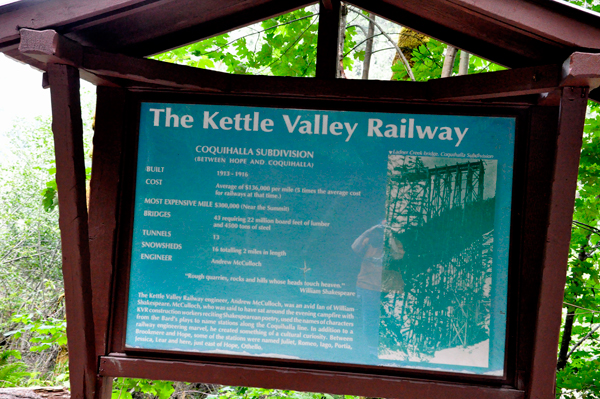 |
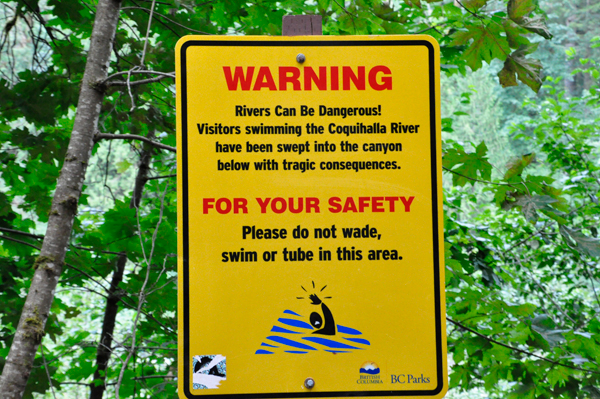 |
Below: The two RV Gypsies got a look at the raging Coquihalla River as they walked the path to the tunnels. |
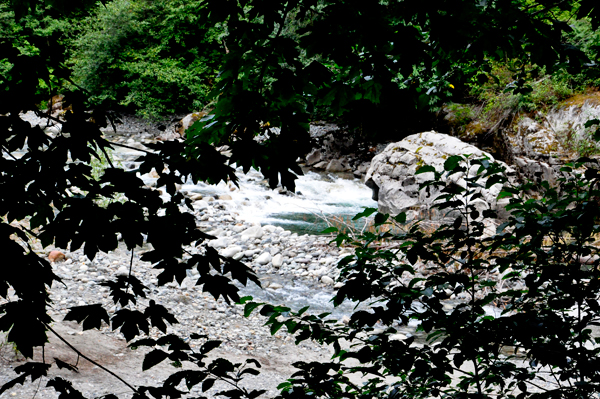 |
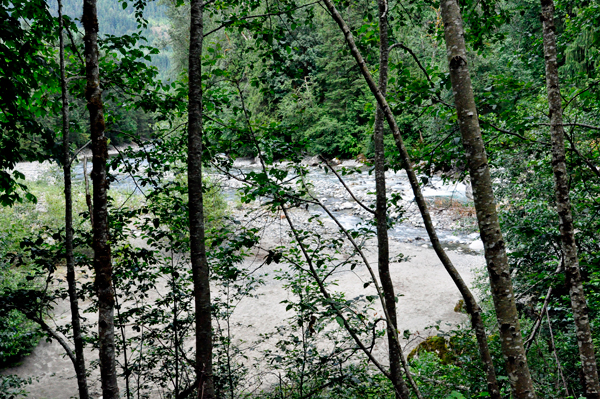 |
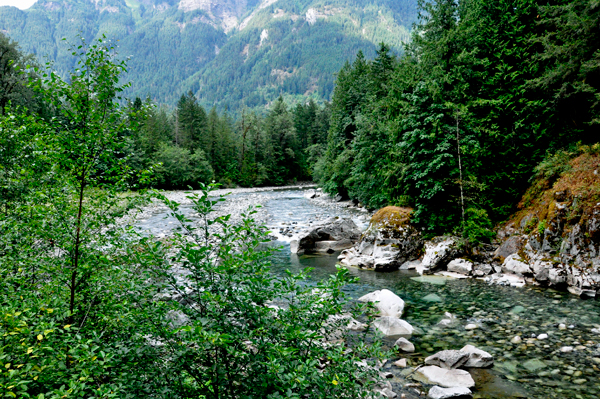 |
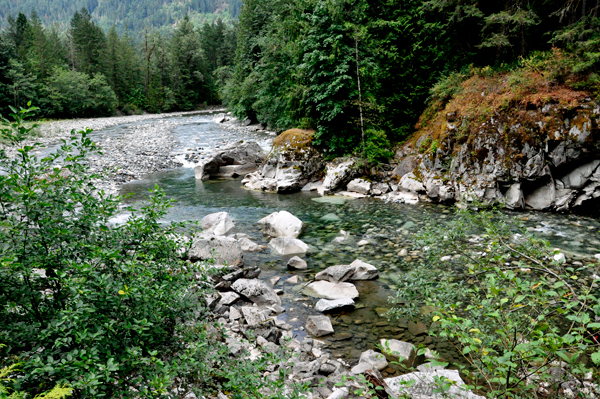 |
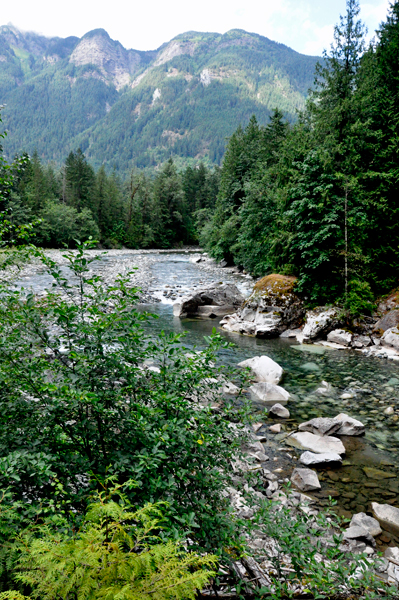 |
 The Kettle Valley Railway proposed to build a line through the Coquihalla Pass. It was more challenging but more direct than the roundabout alternative of going north to the Nicola Valley. Running along the north bank of the Coquihalla River, the line used a 2.2% grade over most of the 36 mile climb from near sea level at Hope to the 36-46 foot Coquihalla summit. Only 4 miles from Hope, the Coquihalla River presented a straight walled canon, rising vertically from the riverbed to a height of more than 300 feet which became one of may obstacles encountered. The Kettle Valley Railway proposed to build a line through the Coquihalla Pass. It was more challenging but more direct than the roundabout alternative of going north to the Nicola Valley. Running along the north bank of the Coquihalla River, the line used a 2.2% grade over most of the 36 mile climb from near sea level at Hope to the 36-46 foot Coquihalla summit. Only 4 miles from Hope, the Coquihalla River presented a straight walled canon, rising vertically from the riverbed to a height of more than 300 feet which became one of may obstacles encountered.
|
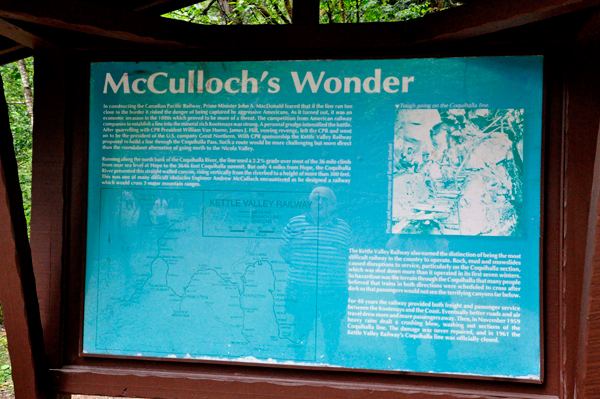 |
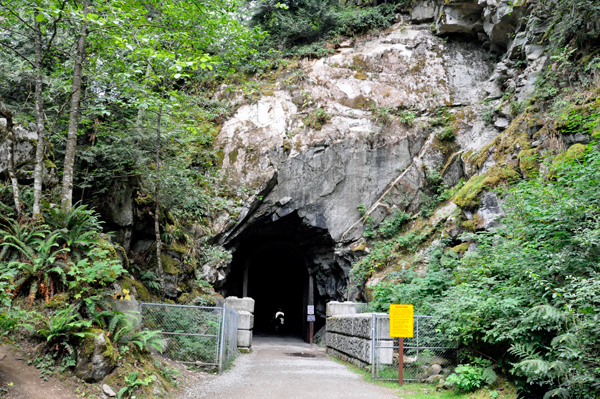 |
 When constructing the railway through the roughest portion of the Coquihalla Canyon, chief engineer Andrew McCulloch determined that a routing proposed by his subordinates through this section was unnecessarily long or complex. McCulloch recalculated the requirements, and decided that a straight section of track through this area was required, and in order to achieve this, five closely aligned tunnels would be required. He also determined that two bridges would need to be built between three of the tunnels. These tunnels were eventually known as the Quintette tunnels. These tunnels are a popular tourist attraction, and are located along the existing Coquihalla Highway (however they are not visible from the highway). These tunnels are also known as the Othello Tunnels because they are near the Othello Railway station, named for the Shakespeare character, as is the case with other stations on this stretch of the railway. When constructing the railway through the roughest portion of the Coquihalla Canyon, chief engineer Andrew McCulloch determined that a routing proposed by his subordinates through this section was unnecessarily long or complex. McCulloch recalculated the requirements, and decided that a straight section of track through this area was required, and in order to achieve this, five closely aligned tunnels would be required. He also determined that two bridges would need to be built between three of the tunnels. These tunnels were eventually known as the Quintette tunnels. These tunnels are a popular tourist attraction, and are located along the existing Coquihalla Highway (however they are not visible from the highway). These tunnels are also known as the Othello Tunnels because they are near the Othello Railway station, named for the Shakespeare character, as is the case with other stations on this stretch of the railway.
|
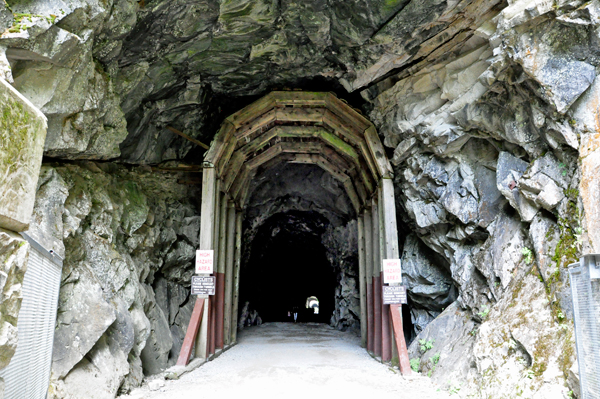 |
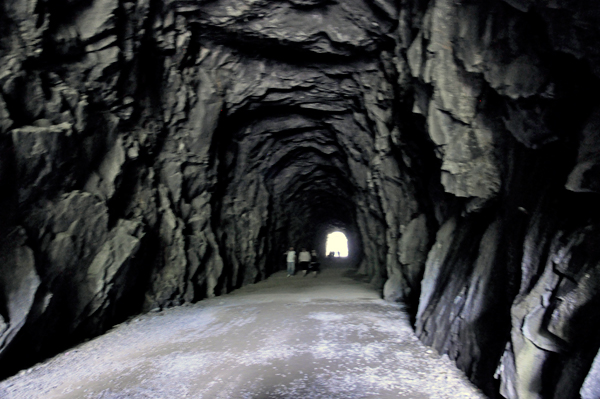 |
Below: The two RV Gypsies entered the
first three tunnels. |
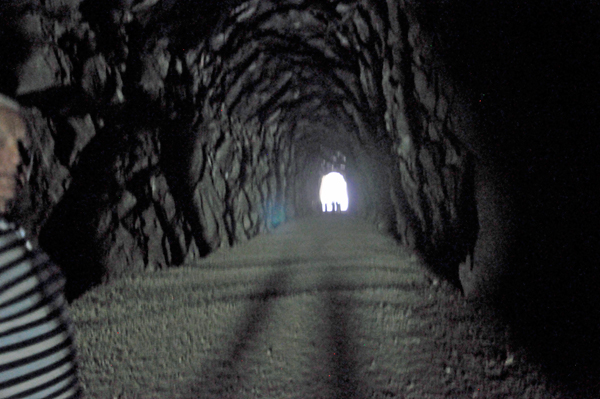 |
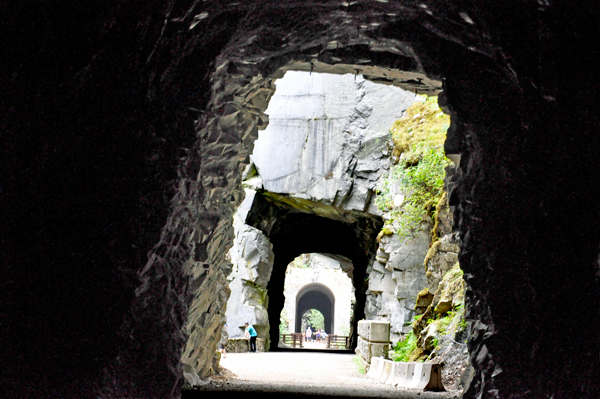 |
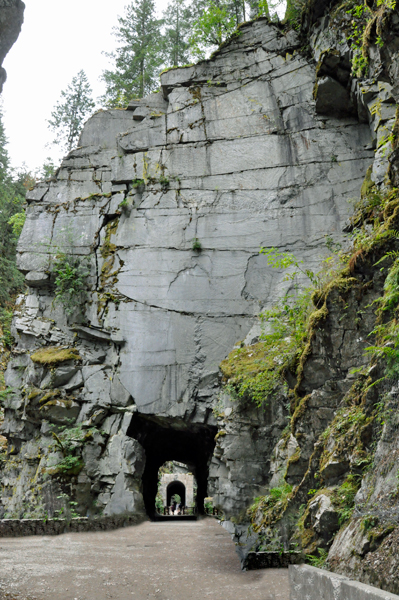 |
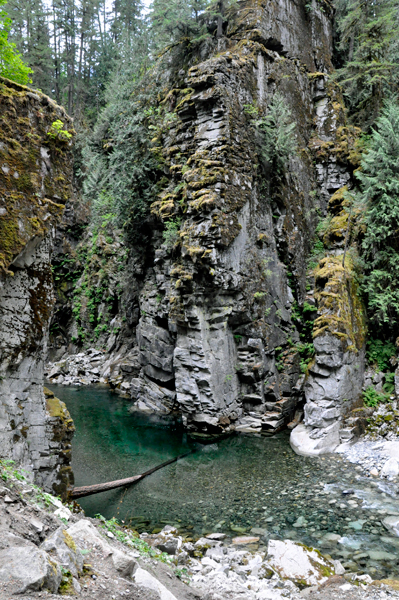 |
Below: The two RV Gypsies looked straight down from one of the bridges. |
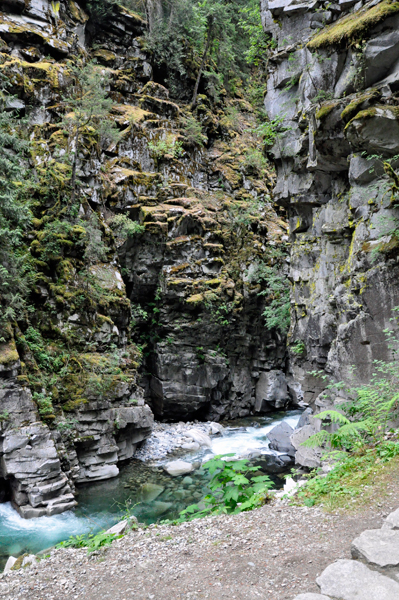 |
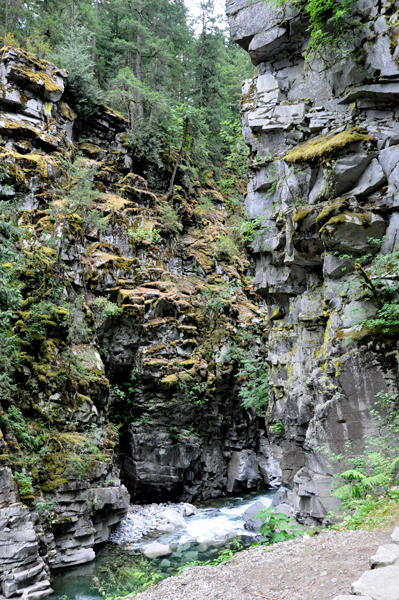 |
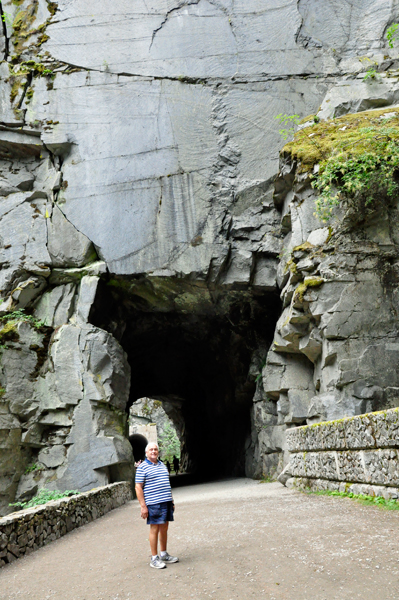 |
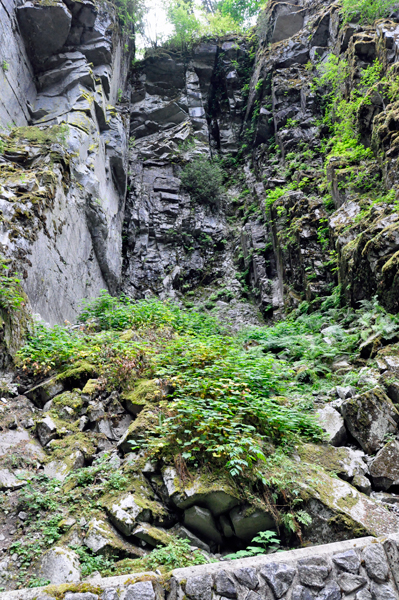 |
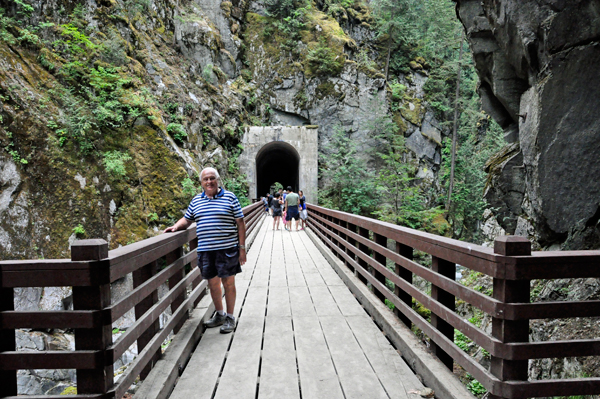 |
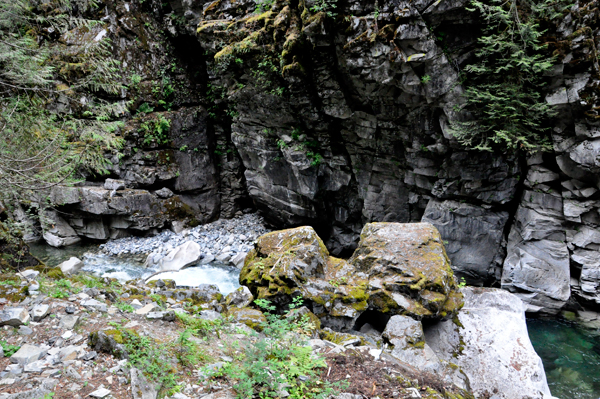 |
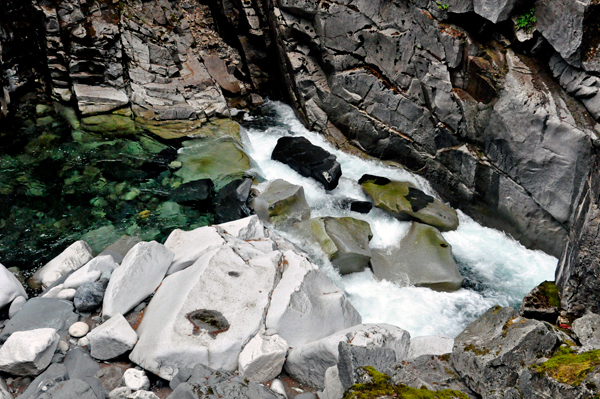 |
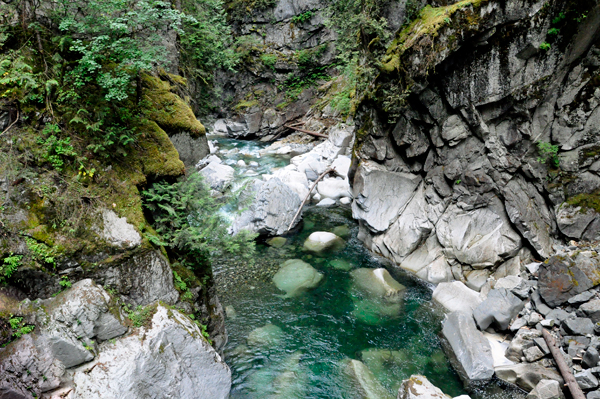 |
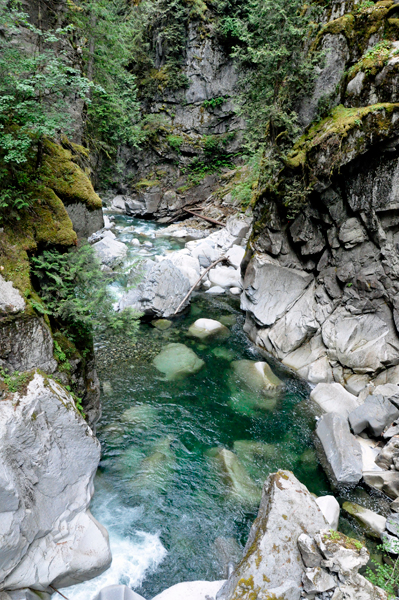 |
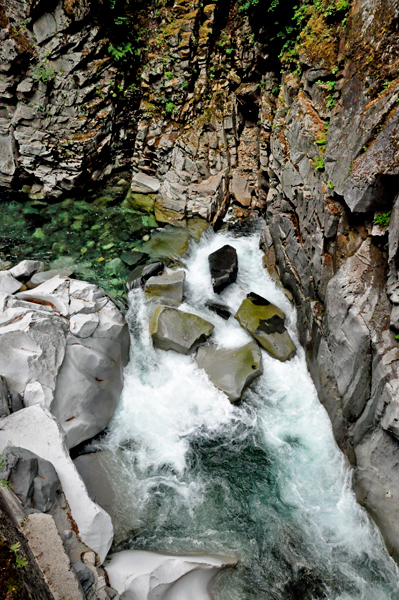 |
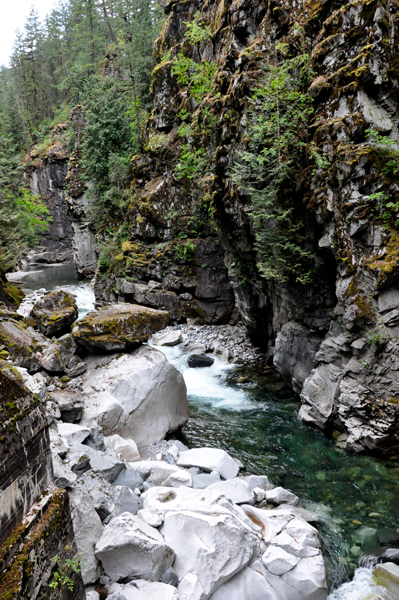 |
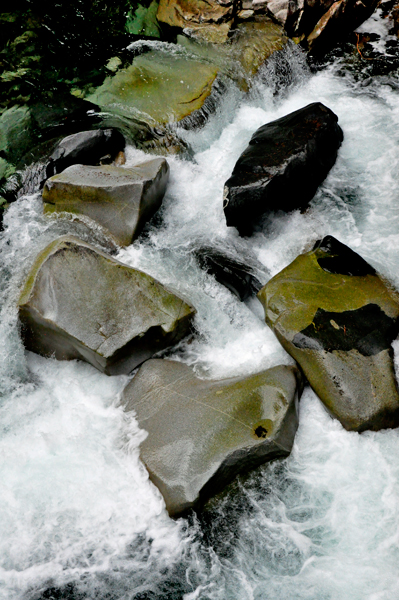 |
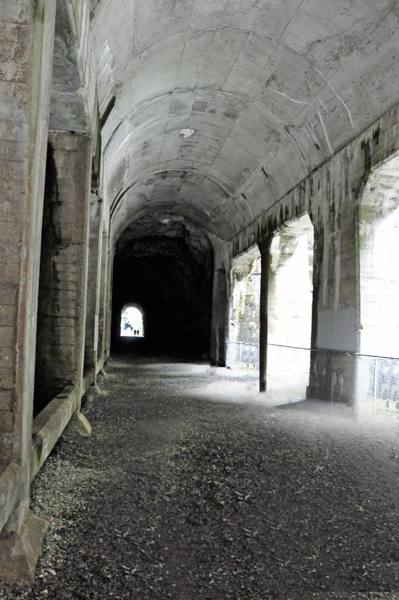 |
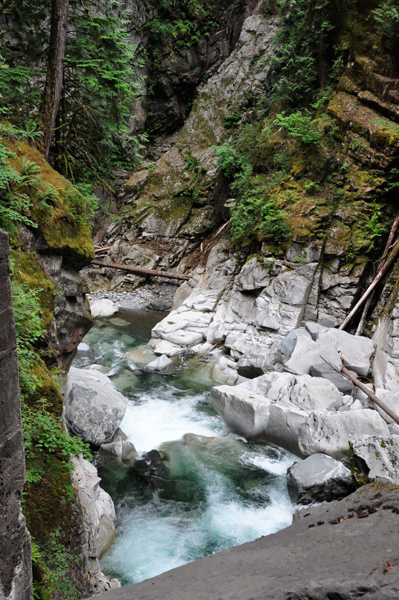 |
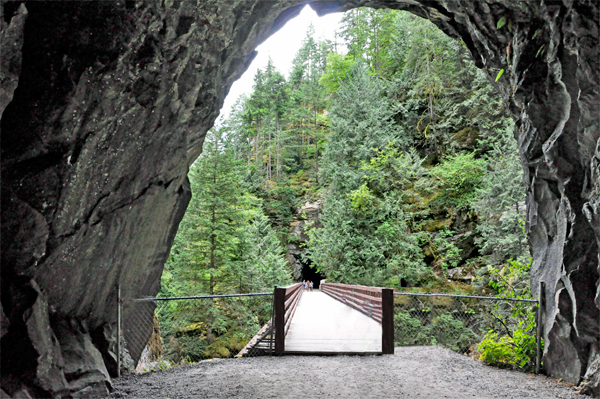 |
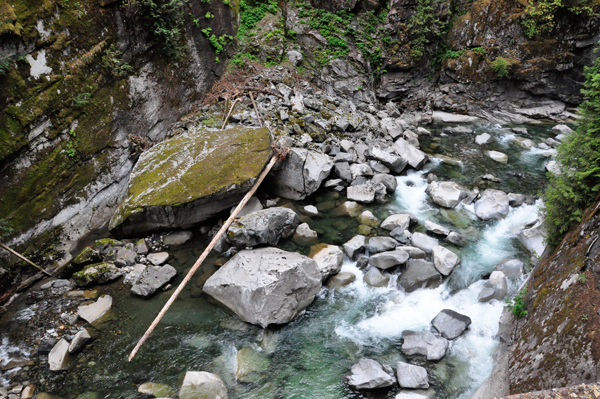 |
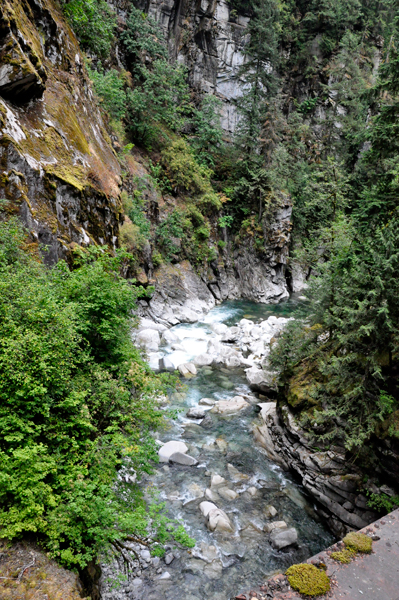 |
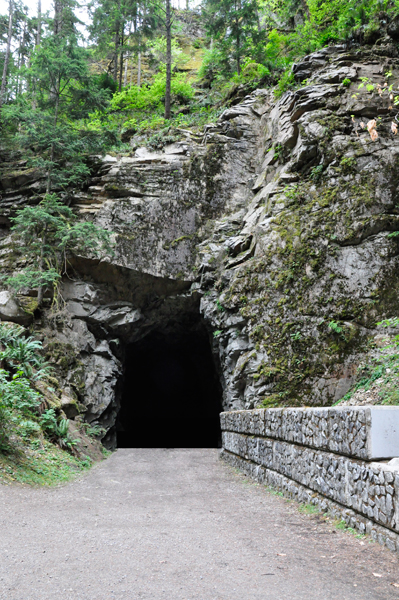 |
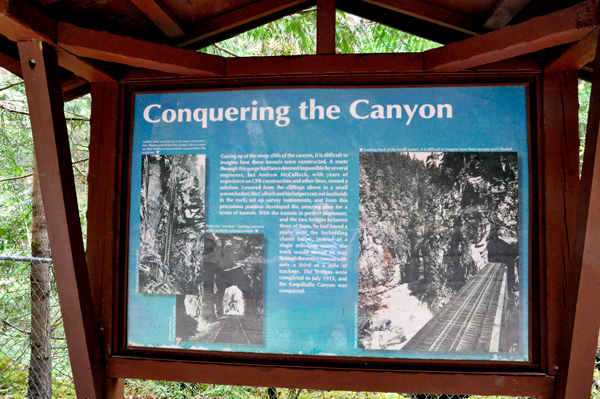 |
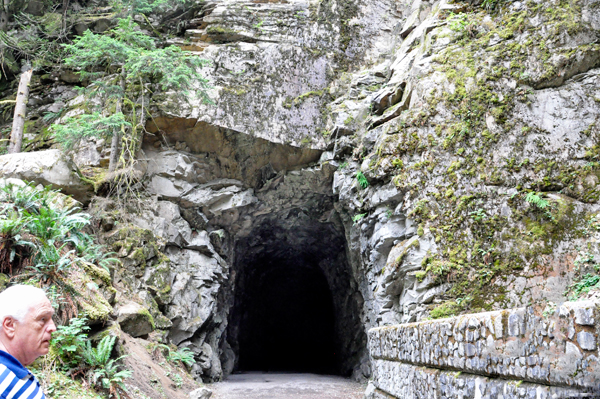 |
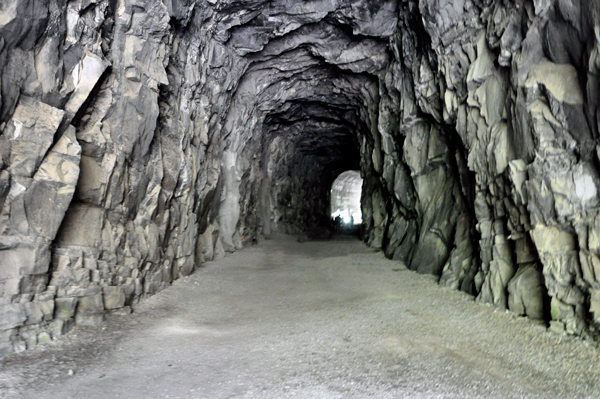 |








































 Coquihalla Canyon Provincial Park, often called The Othello Tunnels, is a provincial park located near Hope, British Columbia. It is focused on the canyon of the Coquihalla River and a decommissioned railway grade that is now a walking trail leading to Coquihalla Pass. Originally part of the Kettle Valley Railway, five tunnels and a series of bridges follow a relatively straight line through the gorge, which is lined with sheer, flat rock cliffs.
Coquihalla Canyon Provincial Park, often called The Othello Tunnels, is a provincial park located near Hope, British Columbia. It is focused on the canyon of the Coquihalla River and a decommissioned railway grade that is now a walking trail leading to Coquihalla Pass. Originally part of the Kettle Valley Railway, five tunnels and a series of bridges follow a relatively straight line through the gorge, which is lined with sheer, flat rock cliffs. Visit sites in the order they happened and continue on to
Visit sites in the order they happened and continue on to